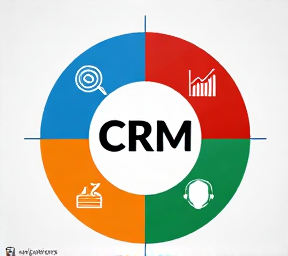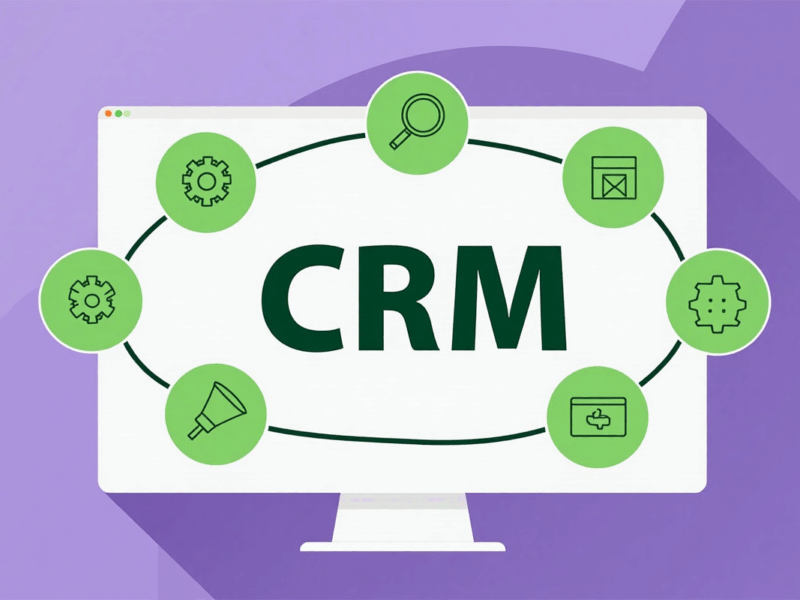How to Implement a Sustainable and Eco-Friendly CRM in 2025
As businesses increasingly recognize the importance of sustainability, integrating eco-friendly practices into customer relationship management (CRM) systems has become essential. Implementing a sustainable and eco-friendly CRM not only enhances your brand’s reputation but also contributes to a greener planet. In this article, we will explore how to implement a sustainable CRM system in 2025, highlighting best practices, key features, and the benefits of going green in your CRM strategy.
Understanding Sustainable CRM
What is Sustainable CRM?
Sustainable CRM refers to the integration of environmentally friendly practices into customer relationship management strategies. It involves using technology and processes that minimize negative environmental impacts while maximizing customer satisfaction and loyalty. Sustainable CRM focuses on long-term relationships with customers, aligning business goals with social responsibility.
Why is Sustainability Important in CRM?
In today’s market, consumers are increasingly aware of environmental issues and prefer to engage with brands that demonstrate a commitment to sustainability. By implementing a sustainable CRM system, businesses can:
- Enhance Brand Reputation: Companies that prioritize sustainability are often viewed more favorably by consumers.
- Attract Eco-Conscious Customers: A sustainable approach can help attract customers who value environmentally responsible practices.
- Reduce Operational Costs: Implementing eco-friendly practices can lead to cost savings through reduced waste and improved efficiency.
Key Features of a Sustainable CRM System
When selecting a CRM system with sustainability in mind, consider the following key features:
1. Cloud-Based Solutions
Cloud-based CRM systems reduce the need for physical servers and on-site infrastructure, which can be energy-intensive. These systems also allow for remote access, reducing the carbon footprint associated with commuting.
Benefits of Cloud-Based CRMs
- Energy Efficiency: Cloud providers often use energy-efficient data centers powered by renewable energy sources.
- Scalability: Easily scale your operations without the need for additional hardware.
- Reduced Waste: Minimize electronic waste by relying on cloud solutions rather than physical equipment.
2. Automation and Workflow Optimization
A sustainable CRM should include automation features that streamline processes and reduce manual tasks. This not only saves time but also minimizes paper usage and other resource consumption.
Key Automation Features
- Automated Email Campaigns: Send targeted emails without printing materials.
- Task Management Automation: Automate reminders and follow-ups to enhance efficiency.
- Reporting Tools: Generate reports digitally to reduce paper waste.
3. Data Analytics for Sustainability
Integrating data analytics into your CRM allows you to track key performance indicators (KPIs) related to sustainability efforts. This data can inform decision-making and help identify areas for improvement.
Important Metrics to Track
- Carbon Footprint: Measure the environmental impact of your operations.
- Customer Engagement: Analyze how sustainable practices influence customer interactions.
- Resource Usage: Monitor the consumption of resources such as paper, energy, and water.
Best Practices for Implementing a Sustainable CRM System
To successfully implement a sustainable CRM system in 2025, follow these best practices:
1. Set Clear Sustainability Goals
Before implementing your CRM system, define clear sustainability objectives aligned with your business strategy. These goals should be specific, measurable, achievable, relevant, and time-bound (SMART).
Examples of Sustainability Goals
- Reduce paper usage by 50% within one year.
- Achieve carbon neutrality in operations by 2030.
- Increase customer engagement in sustainability initiatives by 30% over two years.
2. Involve Stakeholders
Engaging stakeholders from various departments—such as marketing, sales, and customer service—is crucial for successful implementation. Their input will ensure that the system meets the needs of all teams involved in customer interactions.
Strategies for Stakeholder Engagement
- Workshops: Conduct workshops to gather feedback on sustainability initiatives.
- Surveys: Use surveys to assess employee perceptions of sustainability goals.
- Regular Meetings: Hold regular meetings to discuss progress and challenges related to sustainability efforts.
3. Choose the Right Technology Partners
Select technology partners that share your commitment to sustainability. Look for vendors that prioritize eco-friendly practices in their operations and offer solutions that align with your sustainability goals.
Criteria for Evaluating Technology Partners
- Sustainability Certifications: Check for certifications such as ISO 14001 (Environmental Management).
- Energy Efficiency Initiatives: Assess their efforts to reduce energy consumption.
- Transparency: Ensure they provide transparent information about their sustainability practices.
4. Train Employees on Sustainable Practices
Providing training sessions for employees on how to use the new CRM system sustainably is essential. This training should focus on best practices for minimizing environmental impact while maximizing customer engagement.
Training Topics to Cover
- Data Entry Best Practices: Encourage digital documentation over paper-based methods.
- Using Automation Tools: Train employees on how to leverage automation features effectively.
- Sustainability Awareness: Foster awareness about the importance of sustainable practices within the organization.
5. Monitor Progress Regularly
After implementing your sustainable CRM system, continuously monitor progress toward your sustainability goals. Use analytics tools within your CRM to track key metrics related to environmental impact and customer engagement.
Metrics to Monitor
- Customer Feedback: Gather feedback from customers regarding their perceptions of your sustainability efforts.
- Resource Consumption Trends: Analyze trends in resource usage over time.
- Impact Assessments: Conduct regular assessments of the environmental impact of your operations.
The Role of Customer Engagement in Sustainable CRM
Engaging customers in your sustainability initiatives is crucial for building loyalty and trust. Here are some strategies for fostering customer engagement:
1. Communicate Your Sustainability Efforts
Transparency is key when it comes to communicating your sustainability efforts to customers. Use your CRM system to share updates about your initiatives through email newsletters, social media posts, and website content.
Effective Communication Strategies
- Regular Updates: Provide regular updates on progress toward sustainability goals.
- Success Stories: Share success stories that highlight positive impacts on the environment or community.
- Interactive Content: Create interactive content that encourages customers to participate in sustainability initiatives.
2. Involve Customers in Sustainability Initiatives
Encourage customers to participate in your sustainability efforts by offering incentives or creating programs that promote eco-friendly behaviors.
Examples of Customer Involvement Programs
- Loyalty Programs: Implement loyalty programs that reward customers for making sustainable choices (e.g., using reusable bags).
- Community Events: Organize community clean-up events or tree planting initiatives that involve customers.
- Feedback Mechanisms: Use surveys or feedback forms within your CRM to gather ideas from customers on how they would like to engage with your brand’s sustainability efforts.
3. Leverage Social Media Platforms
Social media is a powerful tool for engaging customers in discussions around sustainability. Use these platforms to showcase your initiatives and encourage dialogue with your audience.
Social Media Engagement Strategies
- Campaign Hashtags: Create unique hashtags related to your sustainability campaigns to encourage sharing among followers.
- User-Generated Content: Encourage customers to share their experiences with your brand’s sustainable initiatives through user-generated content campaigns.
- Live Q&A Sessions: Host live sessions where customers can ask questions about your sustainability efforts and provide feedback.
Conclusion
Implementing a sustainable and eco-friendly CRM system in 2025 is not only beneficial for the environment but also essential for building strong customer relationships. By following best practices such as setting clear goals, involving stakeholders, choosing the right technology partners, training employees, monitoring progress regularly, engaging customers effectively, and leveraging social media platforms, businesses can create a robust framework for sustainable customer relationship management.As consumers increasingly prioritize eco-friendly brands, adopting sustainable practices can enhance brand reputation, attract loyal customers, and contribute positively to society. By integrating these principles into their CRM strategies, organizations can pave the way for a greener future while achieving long-term business success.For more information on implementing sustainable business practices, you may find this resource helpful here.


